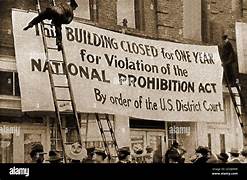On October 23, 1921, the United States was in the midst of a nationwide experiment known as Prohibition. This significant date marked the continuation of the movement to ban the production, sale, and distribution of alcohol in the country, which had far-reaching social, cultural, and economic consequences. The Prohibition era in the United States began with the ratification of the 18th Amendment to the Constitution in 1919, which prohibited the manufacture, sale, and transportation of intoxicating liquors. The goal of Prohibition was to reduce crime, corruption, and social problems associated with alcohol consumption, as well as to promote public health and morality. However, the implementation of Prohibition laws proved to be challenging. The demand for alcohol remained high, and underground activities to produce and distribute alcohol flourished. Illegal bars, known as speakeasies, popped up in cities and towns across the country, where people could gather to drink and socialize in secret. Organized crime syndicates also took advantage of the lucrative black market created by Prohibition. Gangsters such as Al Capone gained power and wealth through their involvement in bootlegging operations, smuggling alcohol from abroad or producing it domestically. The illegal alcohol trade led to increased violence and corruption, further undermining the intended goals of Prohibition. The enforcement of Prohibition laws also strained law enforcement agencies. The government struggled to effectively enforce the ban on alcohol, as widespread public sentiment and lack of resources hindered their efforts. This led to a decline in respect for the law and a general disregard for Prohibition regulations. Furthermore, Prohibition had unintended consequences on the economy. Prior to the ban, the alcohol industry had been a significant source of tax revenue for the government. With the legal alcohol industry shut down, the loss of tax revenue was substantial. Additionally, many breweries, distilleries, and bars were forced to close, resulting in job losses and economic decline in these sectors. The negative effects of Prohibition became increasingly evident over time. The ban on alcohol failed to achieve its intended goals of reducing crime and promoting public health. Instead, it fueled organized crime, increased corruption, and created a culture of illegal drinking. Recognizing the shortcomings of Prohibition, public sentiment began to shift. By the early 1930s, calls for the repeal of Prohibition became louder, and on December 5, 1933, the 21st Amendment was ratified, effectively ending Prohibition. This marked the first and only time in U.S. history that an amendment to the Constitution was repealed by another amendment. The era of Prohibition left a lasting impact on American society and culture. It highlighted the limitations of attempting to legislate morality and the unintended consequences that can arise from such efforts. The failure of Prohibition led to a reevaluation of government policies and a recognition of the importance of individual freedoms and personal choice. October 23, 1921, serves as a reminder of the challenges and complexities associated with Prohibition laws in the United States. It marks a pivotal moment in the history of alcohol regulation and the subsequent acknowledgment of the need for more nuanced approaches to address social issues. The lessons learned from Prohibition continue to shape alcohol policies and discussions in the country today.
23 Oct, 1921 U.S.A. Prohibition Laws
